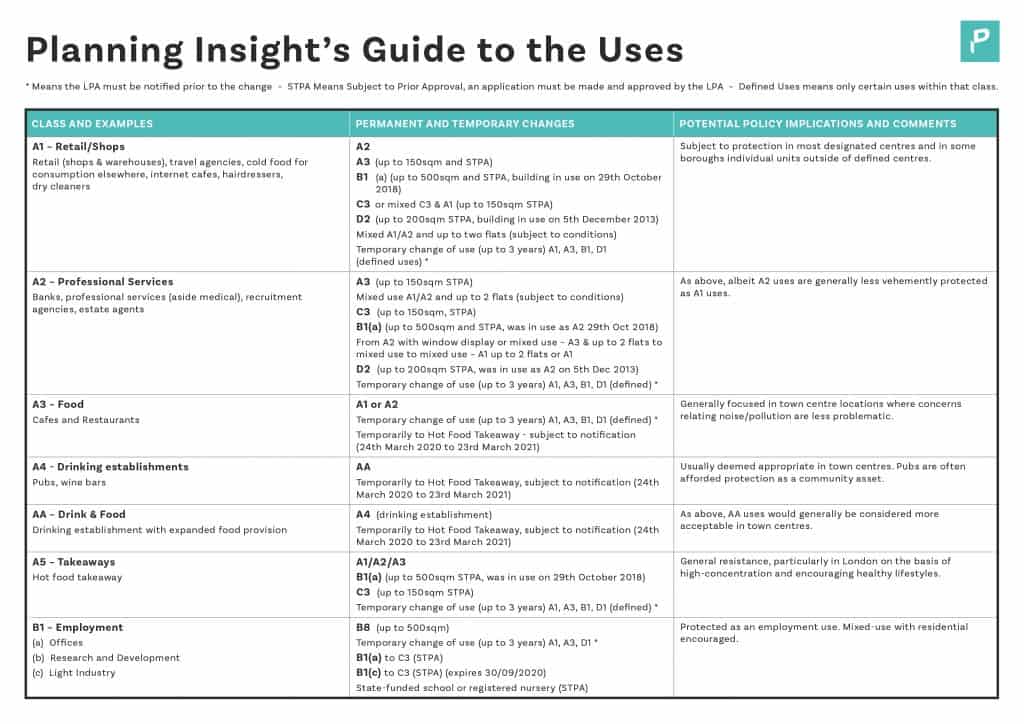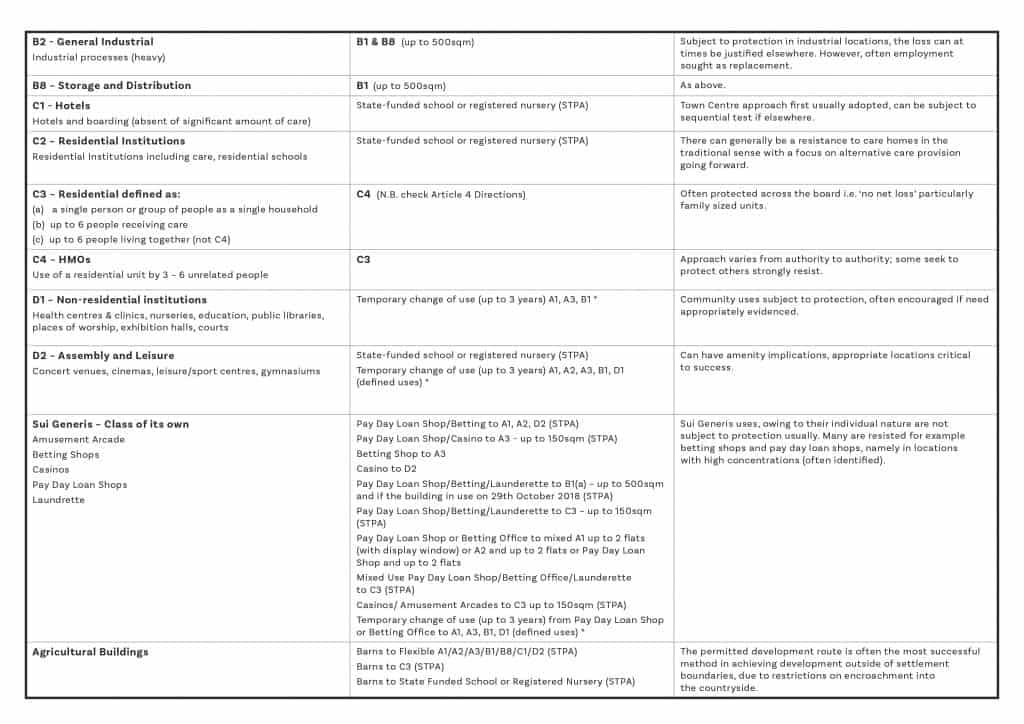Part Four: The future of planning – Flexibility and Permitted Development
Published: 02.07.20
On Tuesday the 30 June 2020, the Prime Minister gave a speech entitled ‘Build, Build, Build’. The primary aim of the speech was to set out the PMs vision for getting the UK back on track post Covid19. In a bid to get the country building and to deliver the homes that are very much needed, a raft of new permitted routes would become available to kick start the economy. As well as this, commitments to infrastructure spending are at the heart of Build, Build, Build. The changes are summarised below:
Flexible uses through reforming the Use Class Order.
This would mean that town centre uses, namely retail, would be able to change to other commercial uses without the need for express permission. A lot of these freedoms already exist in the current regulations; however, removal of any consent would certainly go further in delivering ‘true’ flexibility. Jenrick has stated that a new broad category will be created called “commercial, business and service”.
He went on to state that community and learning facilities would be protected through the planning system (read his statement) It does also state that certain uses e.g. local pubs and theatres will not benefit from the new all encompassing use class and will be subject to the planning process, as there are important local considerations in play.
More commercial buildings will be able to change to residential without the need for planning permission.
The words planning permission are key, no doubt a prior approval process broadening the current possibilities will find its way to legislation. Sustainability of buildings should be a core concern of the Government. Planning policies that require sustainable retrofitting are effective in improving the green credentials of existing buildings. In our view, it is unlikely that such gains will be achieved by the prior approval process.
Normal planning permission not required for the demolition and rebuild of vacant and redundant residential and commercial buildings to deliver home.
This echoes the Permission in Principle process, perhaps a new guise of this established but under-utilised tool. Jenrick has provided further detail, stating that the right will apply to “free-standing vacant and redundant commercial and residential buildings”. We have serious concerns over the interpretation of vacant and redundant. Redundant could be very subjective, an initial thought springs to mind, what if a local authority considers a site is not redundant for employment use and see prospects for future such use? Does this prevent prior approval being granted?
Upward extensions subject to local consultation for property owners.
This harks back to the initial consultation carried out in 2016 (read consultation document) opening a broader field for upward extensions. A key aspect to this is neighbour consultation, again indicating some form of prior approval process.
It was announced that the above will be introduced in September 2020. Further substantive changes are expected for the planning system which are to be announced in a policy document later this month. Exciting times.
What might the future hold?
Shredding the Use Class Order, we think will bring about a step change to the approach to policy. Town Centres are subject to protection, particularly in relation to A1 uses, in some instances overly so. We advocate a flexible approach to town centres and a focus on them becoming hubs for social and community activities. We welcome Jenrick’s commitment to protect these spaces.
An ability to convert empty commercial property, that could have been subject to policy protection, will remove any teeth of policy. Indeed, we can consider the ‘fall back’ position becoming an incredibly powerful tool for applicants. Whilst planning applications may still be required, certain policies will be watered down. As expressed above, we do have concerns about the language being used, such as redundant and we hope there is clear guidance on this rather than a journey through appeals and the courts.
A final thought relates to Article (4) Directions and the ability of local authorities to resist the new raft of PD. These allow a local authority to remove permitted development rights in a defined area, for example Richmond have wide prevention of office to residential conversions. Covid19 has had a devastating effect on the resources of the local authorities. Implementation Article (4)’s and even processing prior applications to enable Britain to Build, Build, Build seems like a tall order, to say the least. Surely investment in the planning process is necessary alongside these wide raining measures.
In the meantime…
Until all these changes come into play, we have prepared the below tables that provides guidance on temporary and permanent changes of land and buildings, along with a short policy ‘heads-up’. These tables are intended to be a living document, and therefore we will be updating as and when the legislation is updated alongside detailed analysis in our usual blog format.
The Town and Country Planning (Use Classes) Order 1987 (as amended) classifies land and buildings into categories which are ‘Use Classes’. On the surface, this offers a fairly binary approach for each type of use, however as most property people will attest, it can prove pretty complicated, pretty quickly. Use classes define different land use typologies, for example B classes are business uses, in this Use Class there is significant variation, for example B1(a) is offices and B8 is storage and distribution.
Permitted development is seen as deregulation, however it has become ever growingly complicated and even for the most experienced practitioners struggle to keep pace. The below is just a guide and can frame the beginning of a conversation, outlining what could be achievable via the statutory instruments. There are certainly more straight forward changes of use (e.g. A1 to A2), however many involve strict qualifying factors and in some instances the sign off from the Local Authority. We strongly recommend talking to a professional suitably qualified in order to advise you correctly.




